Abstract
The molecular size distribution and biochemical composition of the dissolved organic carbon released from natural communities of lake phytoplankton (photosynthetically produced dissolved organic carbon [PDOC]) and subsequently used by heterotrophic bacteria were determined in three lakes differing in trophic status and concentration of humic substances. After incubation of epilimnetic lake water samples with H14CO3- over one diel cycle, the phytoplankton were removed by size-selective filtration. The filtrates, still containing most of the heterotrophic bacteria, were reincubated in darkness (heterotrophic incubation). Differences in the amount and composition of PDO14C between samples collected before the heterotrophic incubation and samples collected afterwards were considered to be a result of bacterial utilization. The PDO14C collected at the start of the heterotrophic incubations always contained both high (>10,000)- and low (<1,000)-molecular-weight (MW) components and sometimes contained intermediate-MW components as well. In general, bacterial turnover rates of the low-MW components were fairly rapid, whereas the high-MW components were utilized slowly or not at all. In the humic lake, the intermediate-MW components accounted for a large proportion of the net PDO14C and were subject to rapid bacterial utilization. This fraction probably consisted almost entirely of polysaccharides of ca. 6,000 MW. Amino acids and peptides, other organic acids, and carbohydrates could all be quantitatively important parts of the low-MW PDO14C that was utilized by the heterotrophic bacteria, but the relative contributions of these fractions differed widely. It was concluded that, generally, low-MW components of PDOC are quantitatively much more important to the bacteria than are high-MW components, that PDOC released from phytoplankton does not contain substances of quantitative importance as bacterial substrates in all situations, and that high-MW components of PDOC probably contribute to the buildup of refractory, high-MW dissolved organic carbon in pelagic environments.
Full text
PDF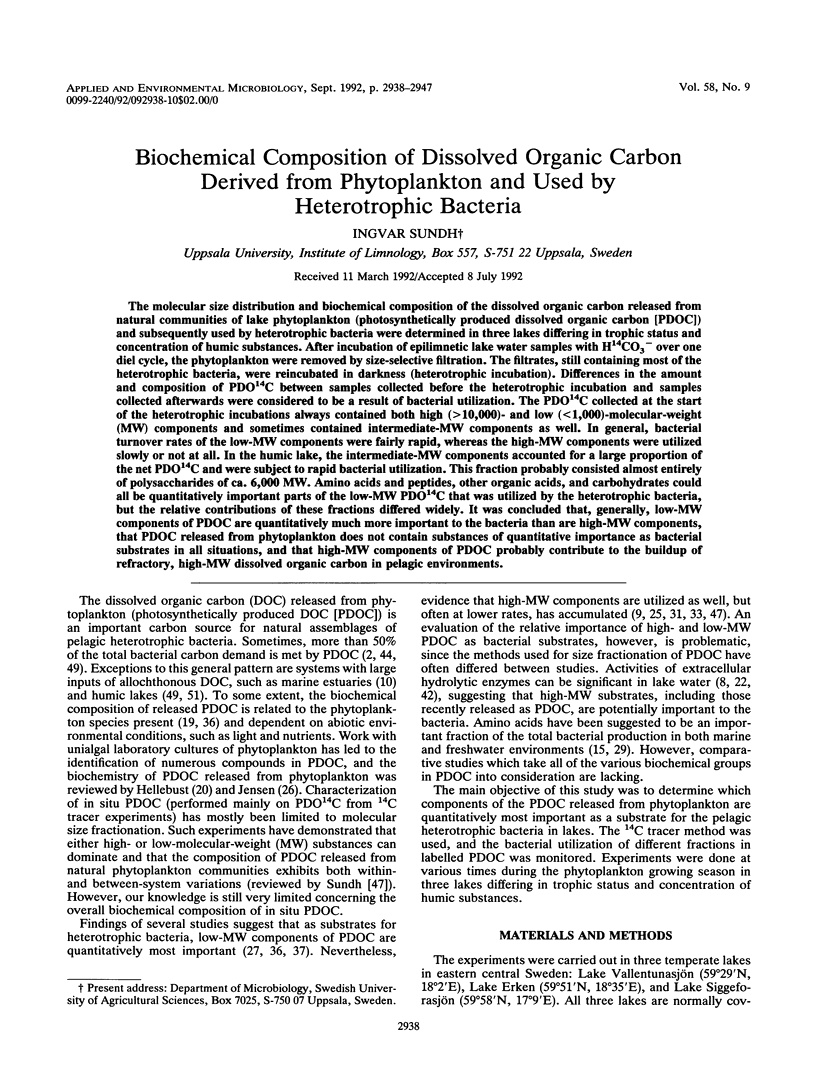
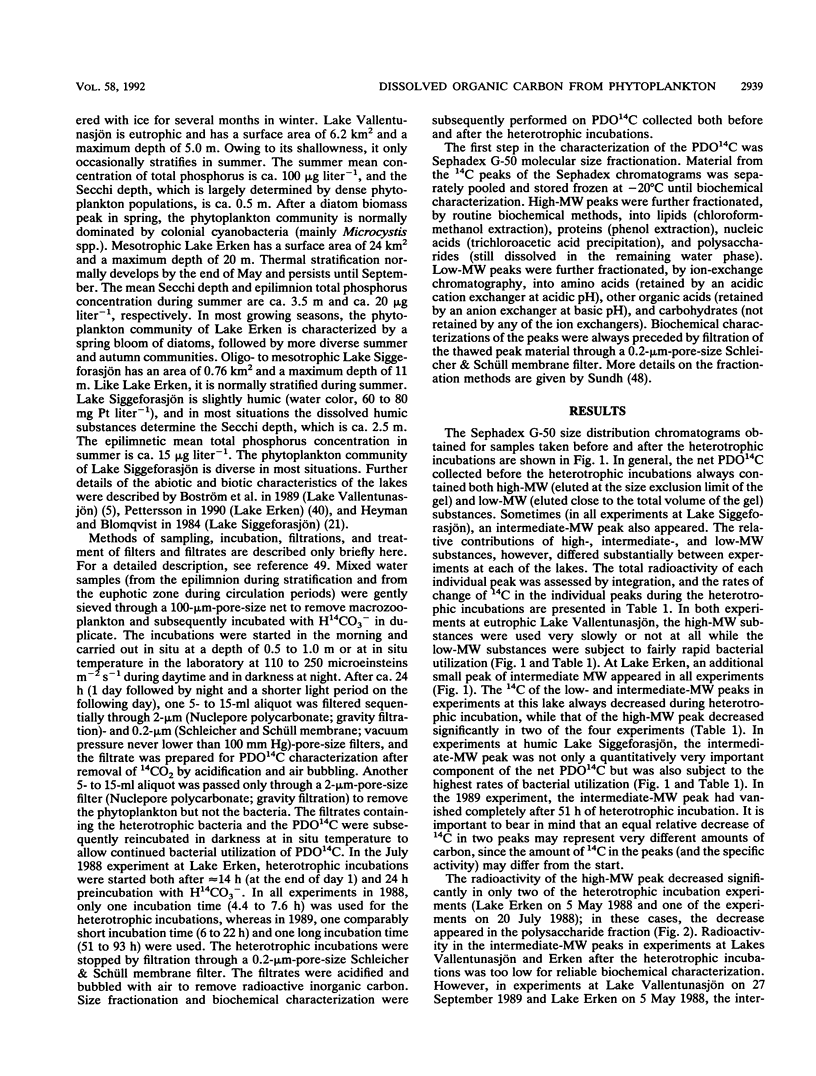
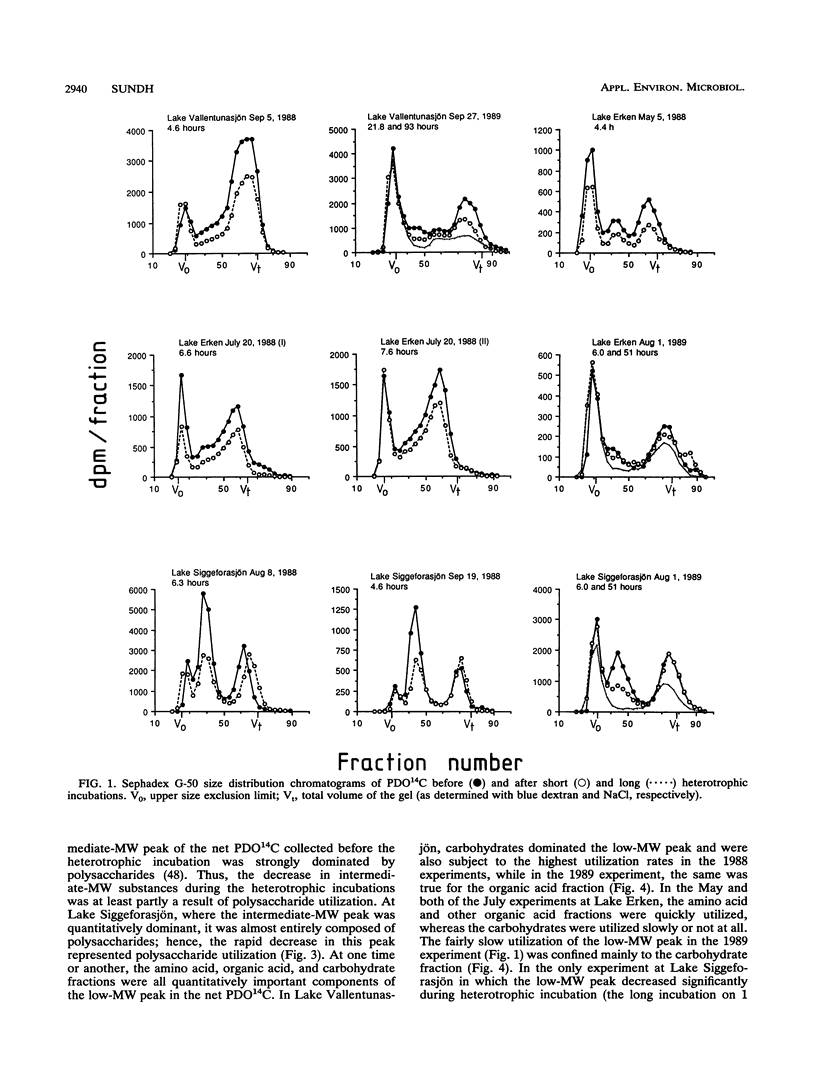
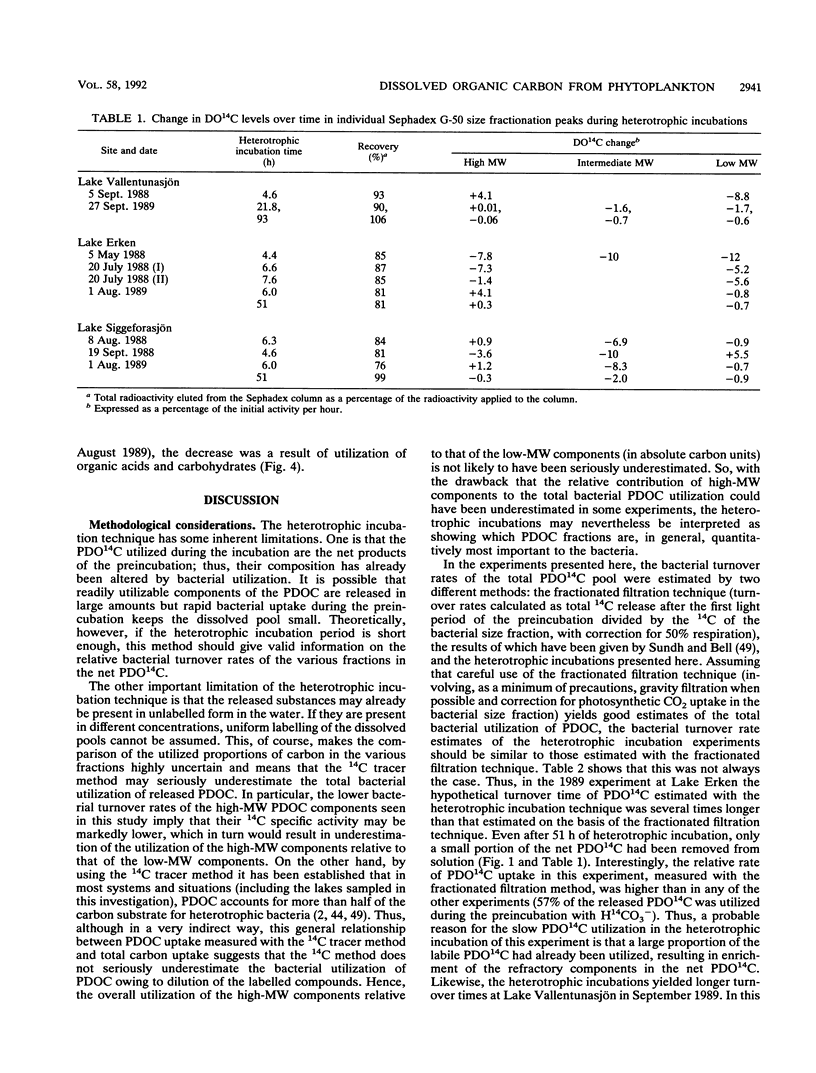
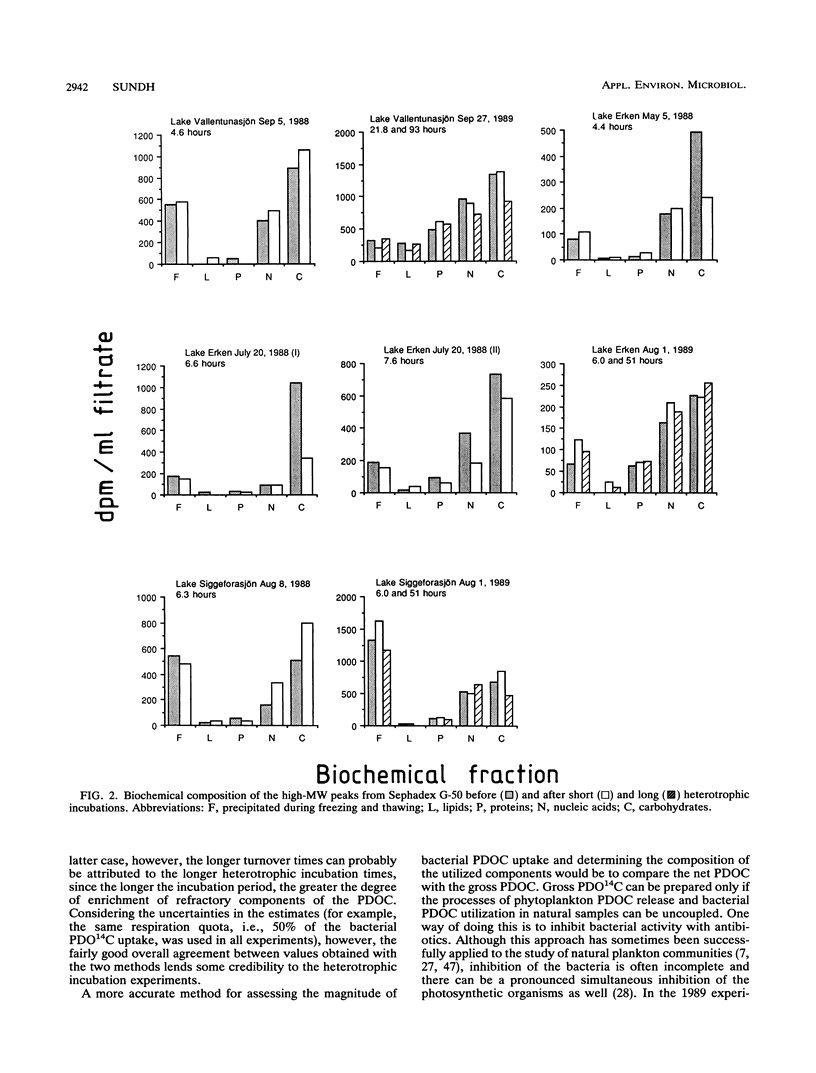
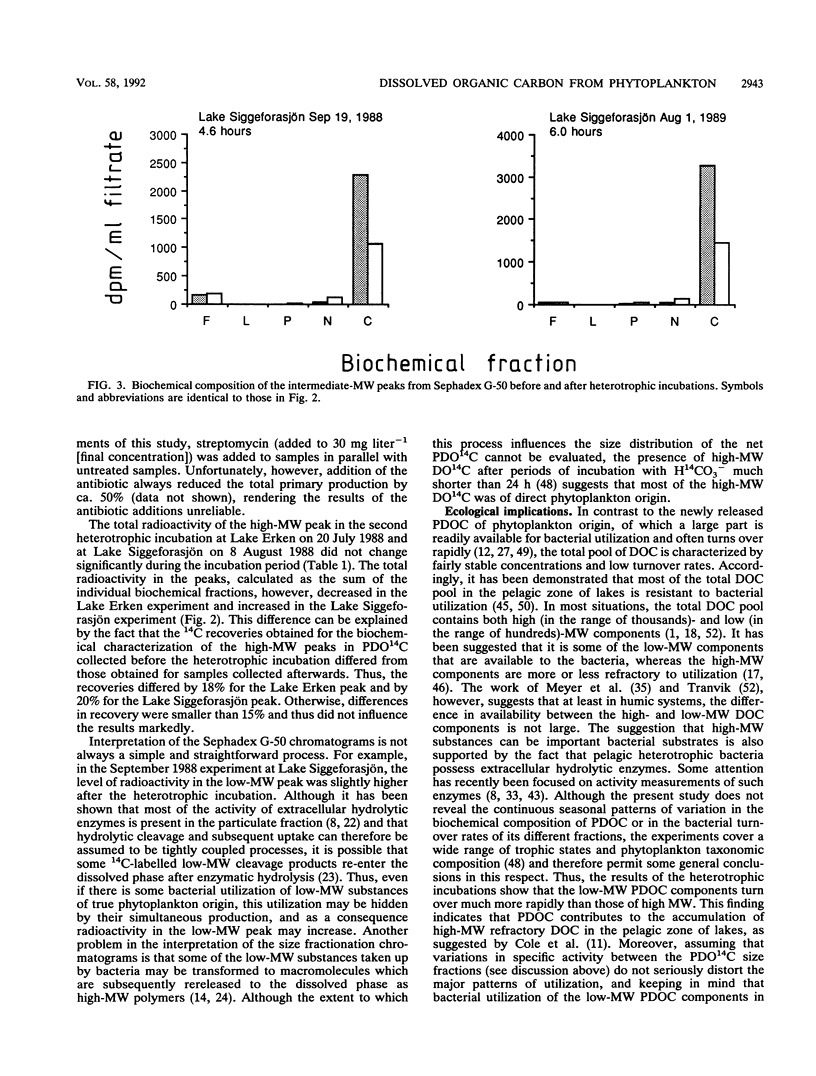
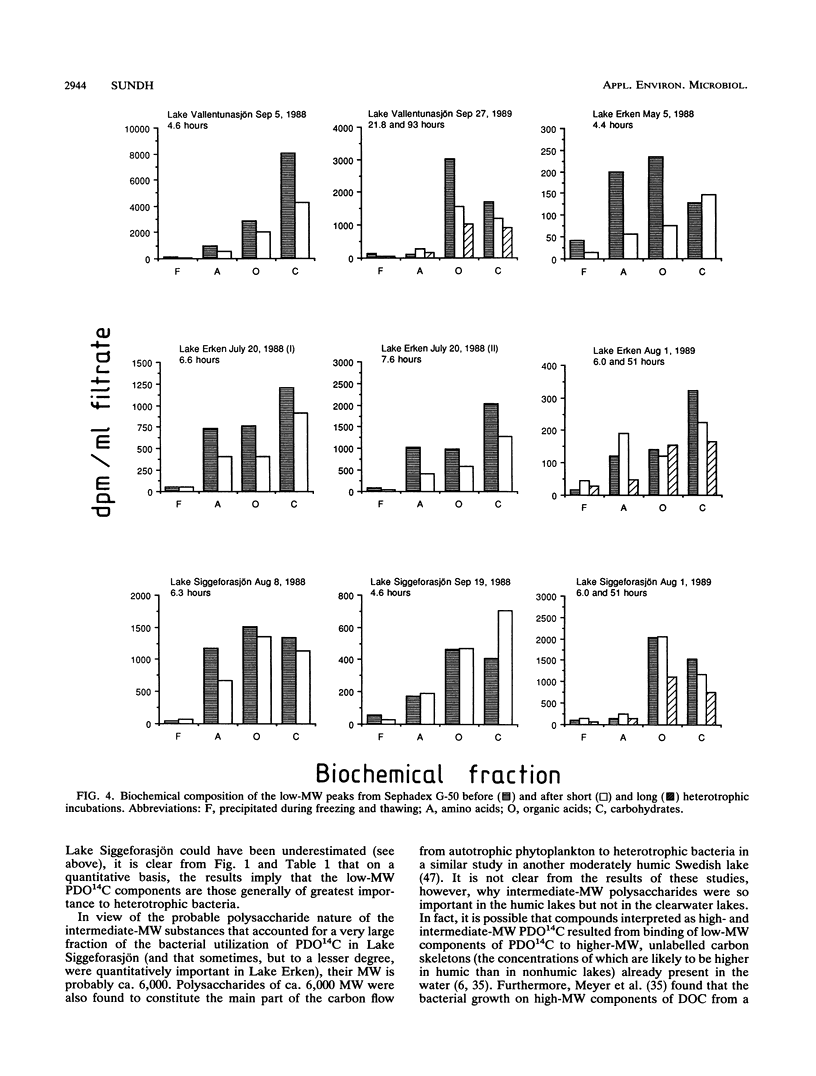
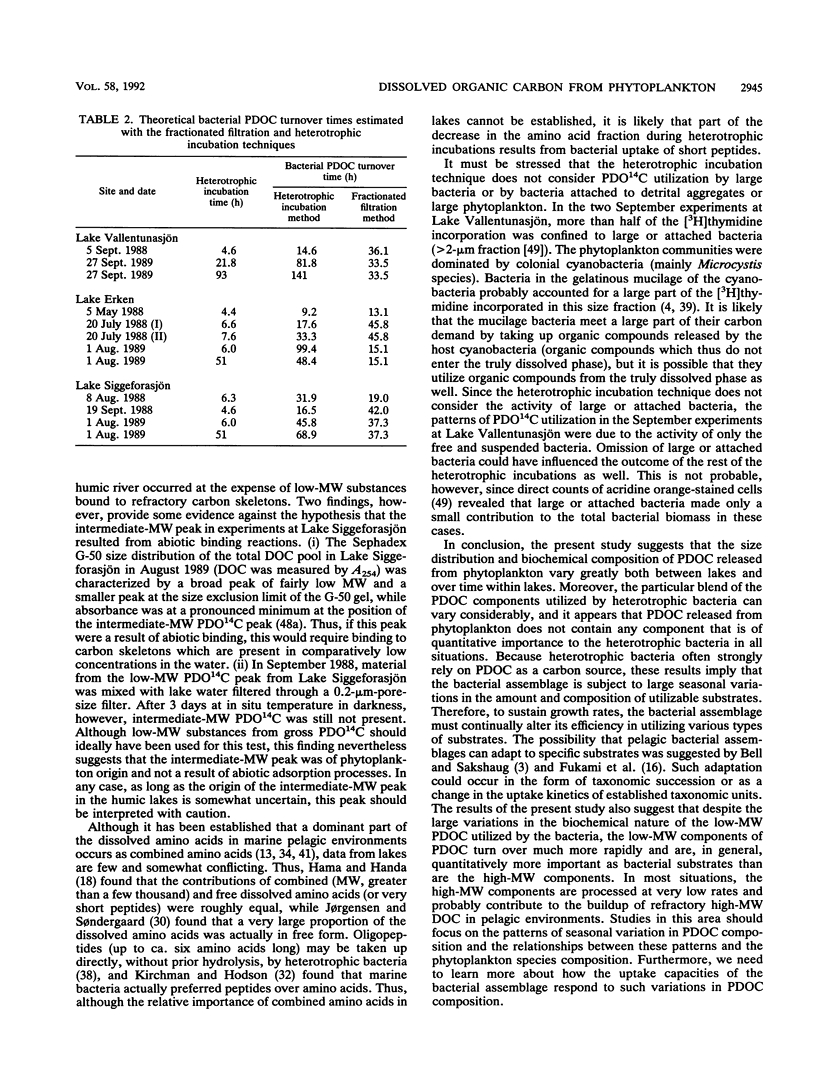
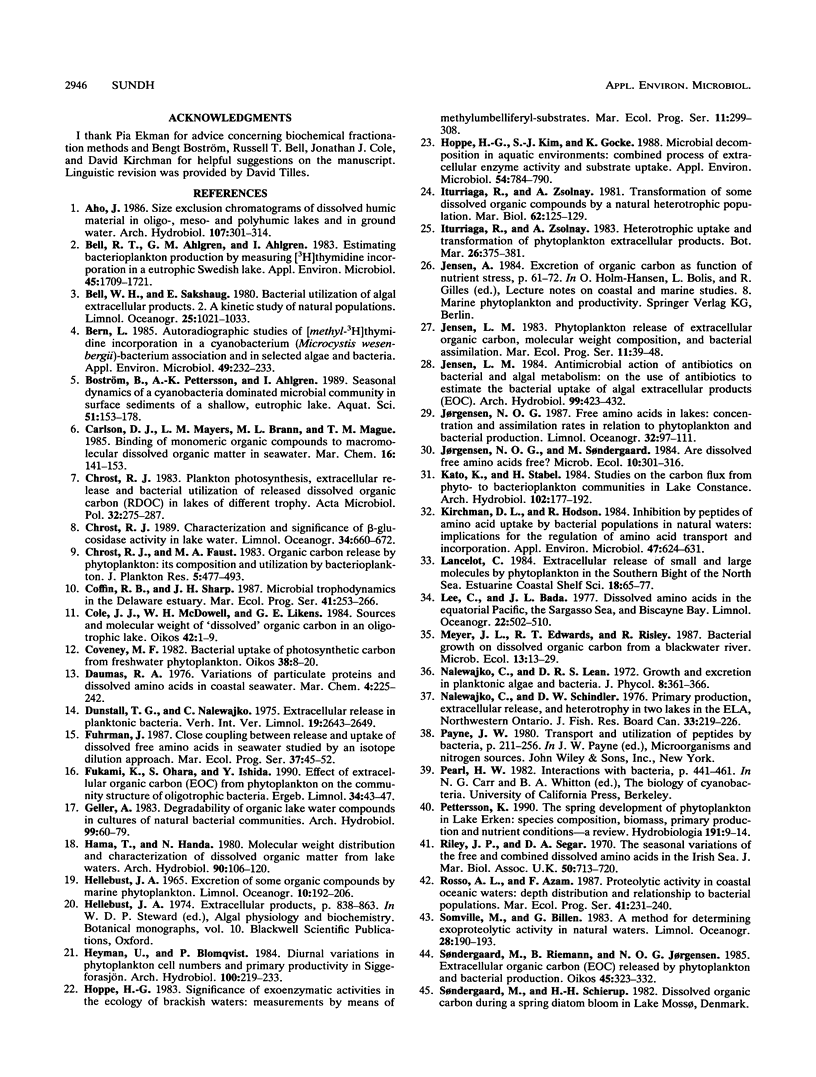
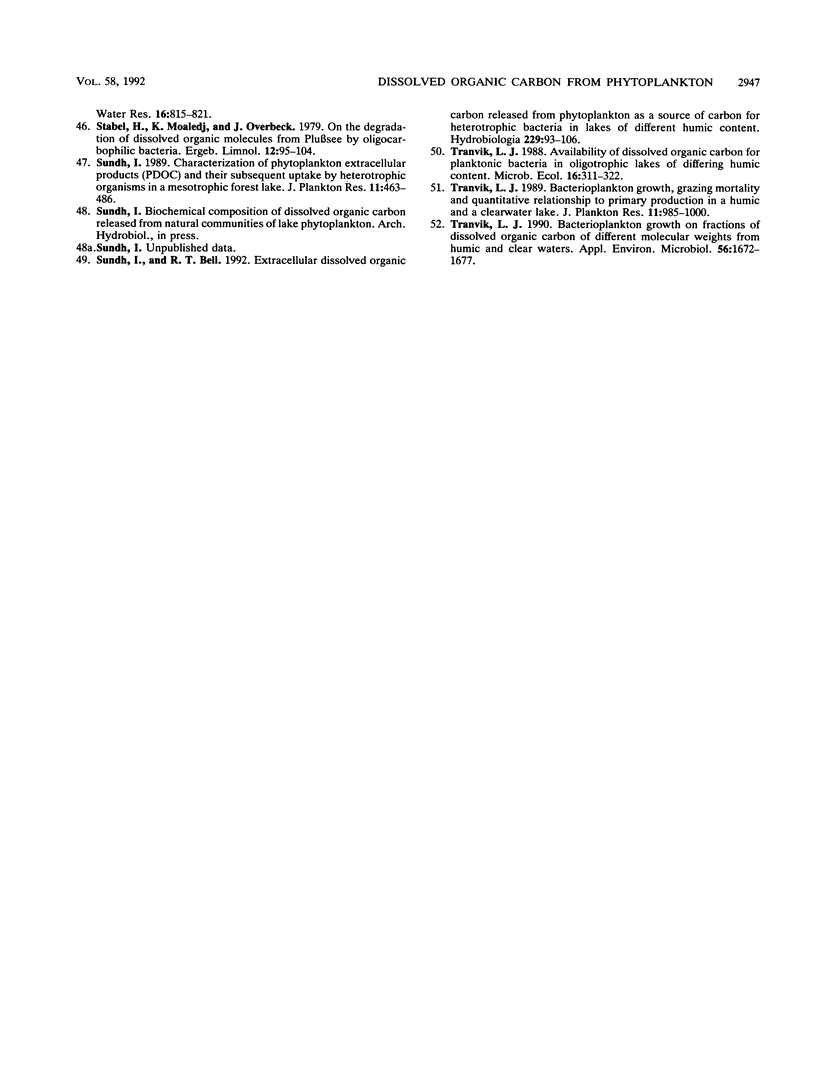
Selected References
These references are in PubMed. This may not be the complete list of references from this article.
- Bell R. T., Ahlgren G. M., Ahlgren I. Estimating Bacterioplankton Production by Measuring [H]thymidine Incorporation in a Eutrophic Swedish Lake. Appl Environ Microbiol. 1983 Jun;45(6):1709–1721. doi: 10.1128/aem.45.6.1709-1721.1983. [DOI] [PMC free article] [PubMed] [Google Scholar]
- Bern L. Autoradiographic Studies of [methyl-H]Thymidine Incorporation in a Cyanobacterium (Microcystis wesenbergii)-Bacterium Association and in Selected Algae and Bacteria. Appl Environ Microbiol. 1985 Jan;49(1):232–233. doi: 10.1128/aem.49.1.232-233.1985. [DOI] [PMC free article] [PubMed] [Google Scholar]
- Chróst R. J. Plankton photosynthesis, extracellular release and bacterial utilization of released dissolved organic carbon (RDOC) in lakes of different trophy. Acta Microbiol Pol. 1983;32(3):275–287. [PubMed] [Google Scholar]
- Hoppe Hans-Georg, Kim Sang-Jin, Gocke Klaus. Microbial Decomposition in Aquatic Environments: Combined Process of Extracellular Enzyme Activity and Substrate Uptake. Appl Environ Microbiol. 1988 Mar;54(3):784–790. doi: 10.1128/aem.54.3.784-790.1988. [DOI] [PMC free article] [PubMed] [Google Scholar]
- Kirchman D., Hodson R. Inhibition by peptides of amino Acid uptake by bacterial populations in natural waters: implications for the regulation of amino Acid transport and incorporation. Appl Environ Microbiol. 1984 Apr;47(4):624–631. doi: 10.1128/aem.47.4.624-631.1984. [DOI] [PMC free article] [PubMed] [Google Scholar]
- Tranvik L. J. Bacterioplankton growth on fractions of dissolved organic carbon of different molecular weights from humic and clear waters. Appl Environ Microbiol. 1990 Jun;56(6):1672–1677. doi: 10.1128/aem.56.6.1672-1677.1990. [DOI] [PMC free article] [PubMed] [Google Scholar]


